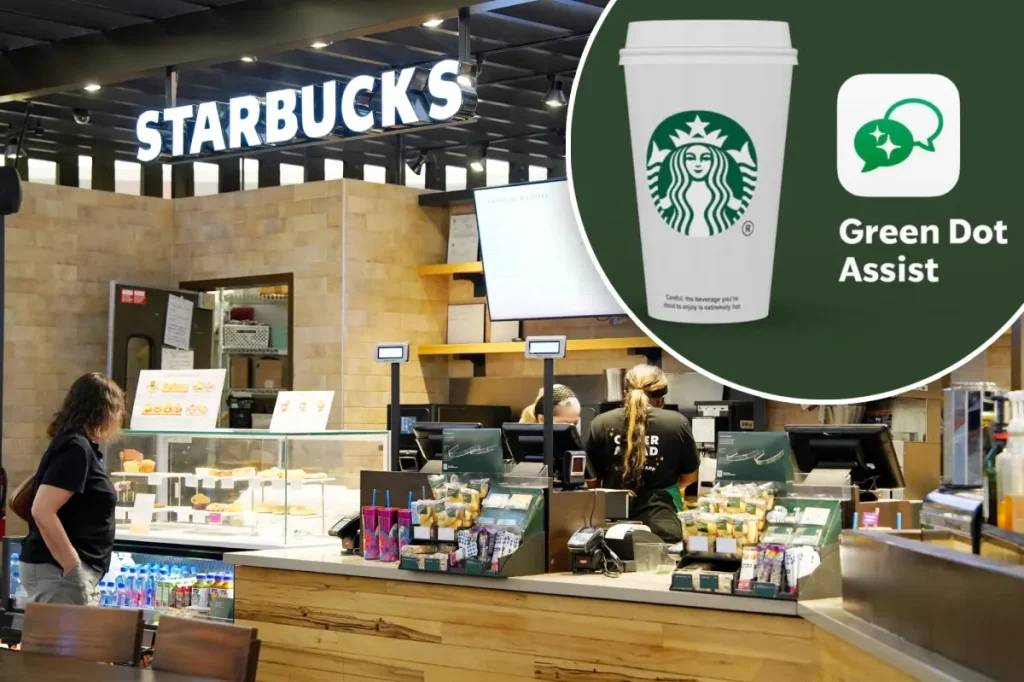Coffee Shops Embrace AI: How Technology is Transforming Your Daily Brew
In a world where digital innovation touches nearly every aspect of our lives, even the simple pleasure of a morning coffee is evolving through artificial intelligence. Starbucks, under the leadership of CEO Brian Niccol, is pioneering this transformation within the coffee industry. Speaking at Salesforce’s Dreamforce conference in San Francisco, Niccol revealed how the coffee giant is developing internal technology to assist baristas in real-time and potentially predict customer orders before they’re even placed. This technological push aligns with Starbucks’ renewed commitment to becoming “the world’s great customer service company again,” blending the warmth of human interaction with the efficiency of AI. The most significant advancement so far is their “Green Dot Assist” tool, a barista assistant that has moved beyond the pilot stage into wider implementation across their stores.
The Green Dot Assist functions as a specialized chatbot designed to support store leaders with day-to-day operational challenges. When facing equipment issues or uncertainty about crafting a specific beverage, employees can turn to this digital assistant for immediate guidance. A Starbucks spokesperson emphasized to TODAY.com that this technology is specifically designed to complement human employees rather than replace them—”making their jobs easier” while maintaining the authentic human connection that defines the Starbucks experience. This approach reflects a broader philosophy within the company: technology should enhance the customer experience without sacrificing the personal touch that coffee shops have traditionally offered. The company is treading carefully to ensure that automation serves both their staff and customers rather than creating distance between them.
Looking ahead, Niccol revealed that the Starbucks mobile app represents the frontier for their AI experimentation. The company envisions a future where customers might not even need to open their app to place an order. Instead, an AI system could predict your regular order based on your history, time of day, and location, allowing you to simply speak into your phone: “Hey, I need my Starbucks order. I’ll be there in 10 minutes,” and find your perfectly prepared drink waiting upon arrival. This seamless integration of AI into the customer journey promises to reduce friction while personalizing the experience. However, Niccol was quick to dismiss concerns about fully automated stores, emphasizing that Starbucks is focused on “getting more partners back into our stores” to deliver “a great, not robotic” experience rooted in “real craft.” This balance between technological advancement and human craftsmanship appears central to their strategy.
The coffee giant’s approach reveals a thoughtful consideration of how AI can transform customer service without losing the human element that makes coffee shops special gathering places. By focusing on applications that support rather than replace their baristas, Starbucks is navigating the fine line between efficiency and authenticity. Their Green Dot Assist exemplifies this philosophy—providing immediate answers to technical questions while freeing up human employees to focus on customer interactions and crafting beverages with care. Similarly, predictive ordering through their app could reduce wait times and enhance convenience while still ensuring that a human barista prepares your drink with the attention to detail you expect. This gradual integration of AI acknowledges that while technology can streamline operations, the essence of the coffee shop experience remains deeply human.
Starbucks isn’t alone in this technological exploration. Across the coffee landscape, other businesses are experimenting with varying degrees of automation. In New York City’s Hudson Yards, an android barista kiosk features an AI-powered robot named Jarvis that prepares drinks while engaging customers in surprisingly human ways. This one-armed mechanical barista dances, makes “eye contact” through its camera lens as customers order via iPad, and even compliments customers on their beverage choices before asking for a tip. Unlike Starbucks’ assistant approach, this represents a more complete automation of the barista role, raising questions about how customers will respond to fully robotic service in an industry traditionally built on personal connection and craftsmanship.
As coffee shops continue to integrate AI into their operations, they face the challenge of balancing innovation with tradition. The coffee experience has historically been as much about the ritual and human interaction as the beverage itself—a moment of connection in increasingly disconnected lives. Smart coffee companies recognize that technology should enhance rather than replace this fundamental value proposition. Starbucks’ cautious approach suggests they understand this balance, using AI to handle routine tasks while emphasizing the irreplaceable role of human baristas in creating authentic experiences. Whether customers ultimately prefer the efficiency of robot baristas or the warmth of human interaction remains to be seen, but one thing is clear: the future of coffee will blend tradition with technology in ways we’re just beginning to imagine. As these innovations continue to brew, they may forever change how we order, receive, and experience our daily coffee ritual.


